Submitted by ve10 on
This week I'm in the California Bay Area, partly for a single particle imaging workshop, but mostly to celebrate the 80th birthday of my mom, Lilo:
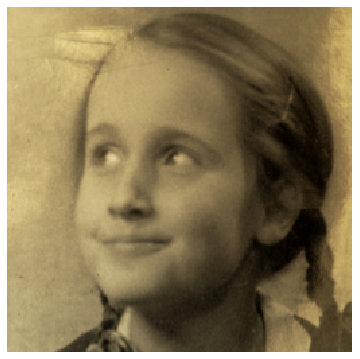
My mom is not a scientist, but my most distinguishing traits as a scientist I owe to her, nevertheless. She was proud, of course, when I got good grades. But when raising me she held me to a higher standard: I was going to be creative. I'm sure she had hopes I would some day be an artist. Her warmest praise was always directed at my artwork. For example, I'm sure she was behind my precocious experiments in realism. "Why do the other kids all draw the sun as a yellow quarter-circle in the corner [I'm paraphrasing here], and birds as two joined arcs?" The closest I came to fulfilling her dream, of becoming an artist, was my graduate school project. I built 20 immense golden rhombohedra that assembled into a beautiful triacontahedron. By pure luck, that sculpture turned out to be a model of Shechtman's AlMn quasicrystal.
In honor of my mom, this post will try to explain a protein folding idea with an artistic metaphor. In an earlier post I referred to proteins as "jigsaw-puzzle-contraptions". Sorry mom, but I have to turn you into a jigsaw puzzle for this:
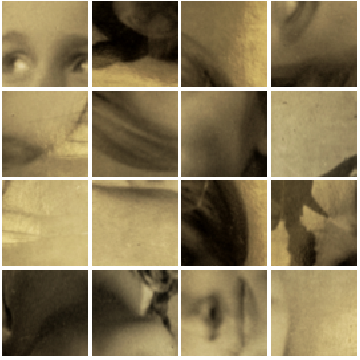
The edges of these puzzle pieces have enough distinguishing features that reassembling my mom, just by finding matching pairs, is very easy. But this is a bad metaphor for proteins. A useful decomposition of proteins into puzzle pieces should at some level reduce to a set that can be put in correspondence with the discrete elements of the protein code: the 20 amino acids. Rather than pieces of infinite variety, we should think of proteins as being built from a much smaller set, drawn from the finite set of ways the 20 amino acids can pack together while also being part of a polymer chain. With apologies, here is a better model of a correctly folded protein (my mom):
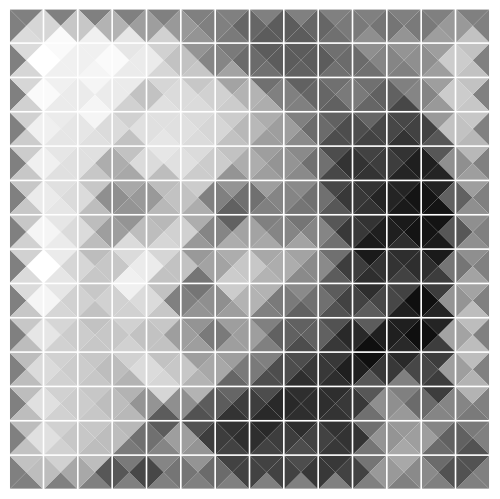
The puzzle pieces, also called tiles, are shown slightly separated. In this smaller version you should be able to pick out my mom:
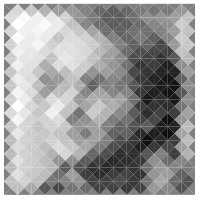
When the tiles are assembled correctly, the shades of gray exactly match where the tiles share an edge. You can think of this in another way. A 45-45-90 triangle on one tile, together with the matching triangle on an adjacent tile, form a square of one shade. Let this be an amino acid. I have rendered my mom (somewhat generously) with 40 shades, that is, with 40 amino acids. Now if the joined, identically shaded triangles are amino acids, what do the tiles represent?
The tiles of the puzzle correspond to the known ways that amino acids can pack. This is information that in principle can be inferred from chemistry, or better yet, from having access to very many examples of folded proteins, as we already have in the PDB. In an earlier post I stated there were really two protein folding problems: defining the rules, and solving a puzzle subject to those rules. Well, the catalog of possible tiles (combinations of shades of gray) is a metaphor for those rules.
The problem with the new and improved mom-puzzle is that it is much harder to solve! No longer does every tile edge have a unique match among all the other tile edges. It looks like there will be many possibilities to be explored and, we hope, only one arrangement (fold) where all the edges match. Puzzles become harder as the number of shades of gray gets smaller. The hardest puzzles are those, where any reduction in the number of shades would lead to multiple solutions. That is the principle behind one of the hardest puzzles ever produced for sale.
Another trait I inherited from my mom is optimism. My hunch is that proteins have not evolved to be dangerously close to the critical state of non-unique folding: they are comfortably far from Eternity II. As puzzles, that should make them easier to solve. And to demonstrate that, I've applied the same type of algorithm I propose to use on real proteins to my mom:
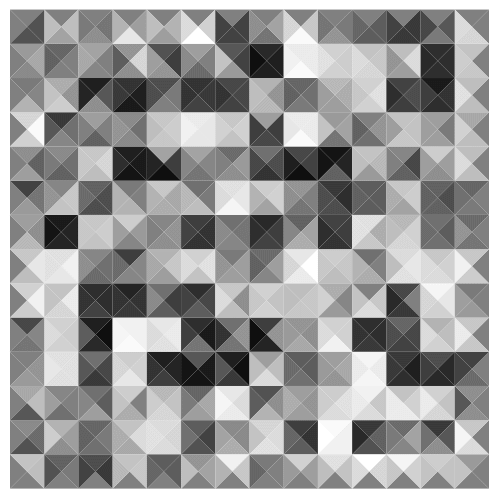
I never had any doubts my mom was unique, but now I have proof.
Happy Birthday Mom!
